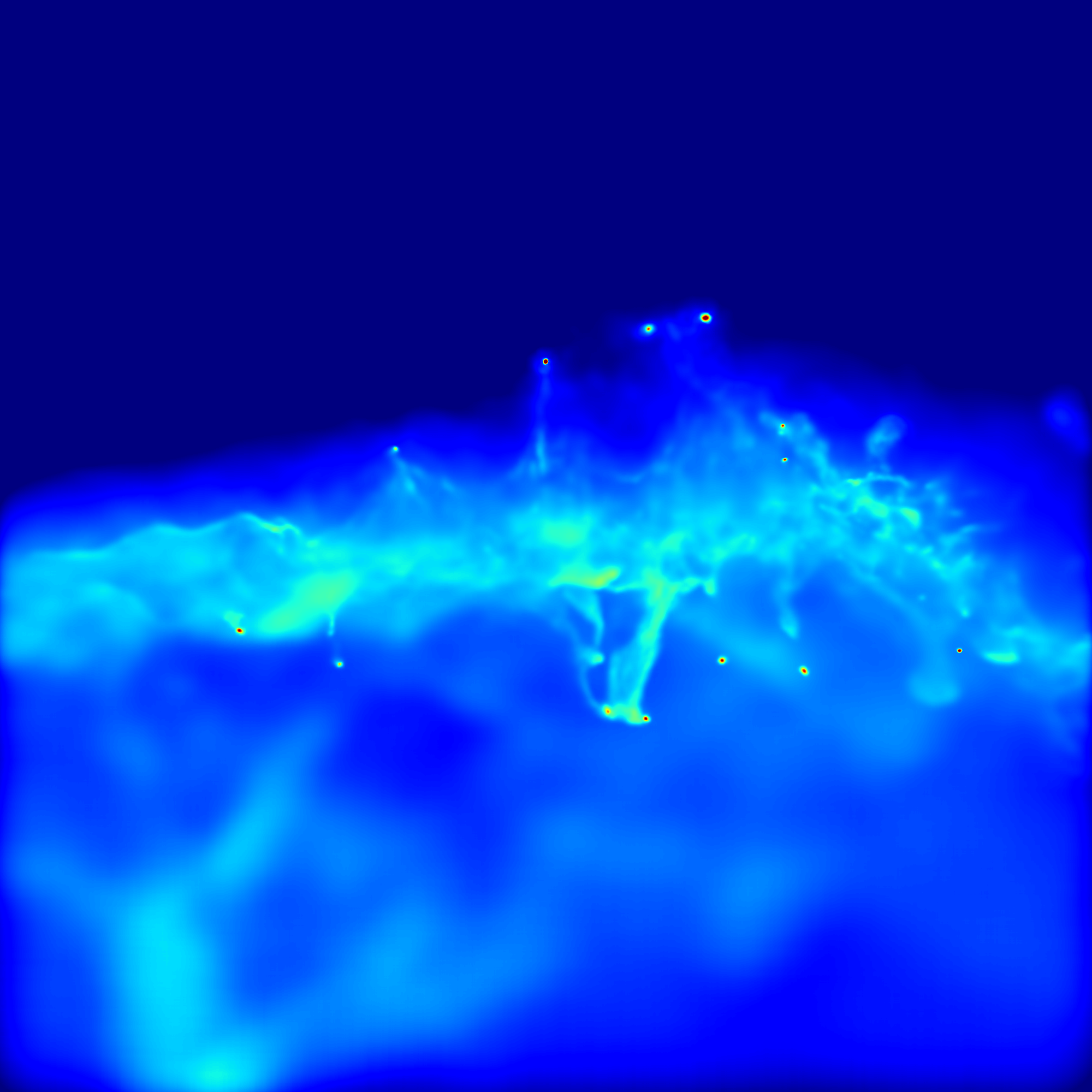Mystery of Vanishing Dwarf Galaxies Explained?

Some dwarf galaxies in the early universe travelled so fast that their gas was stripped from them, according to a new computer simulation.
This cosmic vanishing act could help explain a long-standing mystery: astronomers observe fewer dwarf galaxies in the "Local Group" — the collection of galaxies near the Milky Way — than what models of the universe's formation predict.
But if these galaxies are losing gas, that could explain why they don't appear as plentiful as they should.
Because these dwarf galaxies were so small when they formed, they don't have large reserves of gas to begin with. Stripping any gas away would leave these galaxies so small and dim that they would be all but invisible from Earth. [Stunning Photos of Our Milky Way Galaxy]
"This is something that came out of the simulations, and had not been anticipated, and had not been seen before. It was an interesting discovery," said Julio Navarro, a University of Victoria astronomer and co-author of a paper describing the discovery.
The study, published in the Feb. 1 issue of Astrophysical Journal Letters, was led by graduate studentAlejandro Benitez-Llambay from the University of Cordoba in Argentina. You can also watch a SPACE.com video explaining the missing dwarf galaxies.
Courting CLUES
Breaking space news, the latest updates on rocket launches, skywatching events and more!
Past supercomputer simulations show there should be a huge number of dwarf galaxies, together making up one one-thousandth of the Milky Way's mass, scattered around the local environment. But a 1999 study pointed out that the dwarf galaxies we see are not representative of the calculated mass.
In the past, astronomers suggested that the energy from supernovas, as well as ultraviolet rays permeating the universe, might alter the dwarf galaxies as they form. There were weaknesses with these models, however. Observed supernova energy is too low to affect dwarf galaxy formation, and the ultraviolet rays only shrink the smallest of dwarf galaxies.
To better examine the issue, the new study focused on how dwarf galaxies evolved in the early stages of the universe. Astronomers ran a simulation tracking dark matter halos that duplicate the positions of the three largest galaxies in the Local Group: the Milky Way, Andromeda (M31) and Triangulum (M33).
Next, they re-ran the simulation to focus on one small area in much higher resolution. This allowed them to examine dwarf galaxy evolution in detail.
"We constrained and controlled the numbers to resemble our local environment," Navarro said.
The tool they used was called Constrained Local UniversE Simulations, or CLUES for short. The project, led by the Leibniz Institute for Astrophysics, can simulate the positions and speeds of galaxies within 10 million light years of the Milky Way.
Passing the cosmic speed limit
CLUES revealed that the farthest dwarf galaxies in the Local Group are flying very quickly through the cosmic web of dark matter and ordinary matter that makes up our universe.
When the galaxies pass a given speed, the ram pressure between the dwarf galaxies and this cosmic web strips the galaxies' gas away. It's similar to how the matter gets stripped away from a meteor as it rams through the Earth's atmosphere.
"The galaxy moves at high speed, and the gas strips out and stays behind the galaxy," said Stefan Gottlöber, a Leibniz astronomer who leads CLUES. He was also a co-author on the new paper.
While the gas is all but invisible, we might be able to see the effects gas stripping has had on the galaxies. The astronomers noted that dwarf galaxies are a diverse bunch, with some looking like gas clouds and others filled with stars. Gas stripping could explain why star formation stopped, the scientists suggested.
Navarro, Gottloeber and their collaborators plan another run with CLUES to simulate a larger area to test whether the dwarf galaxy stripping in the Local Group is representative of the entire universe.
Follow Elizabeth Howell @howellspace, or SPACE.com @Spacedotcom. We're also on Facebookand Google+. Original article on SPACE.com.

Elizabeth Howell (she/her), Ph.D., was a staff writer in the spaceflight channel between 2022 and 2024 specializing in Canadian space news. She was contributing writer for Space.com for 10 years from 2012 to 2024. Elizabeth's reporting includes multiple exclusives with the White House, leading world coverage about a lost-and-found space tomato on the International Space Station, witnessing five human spaceflight launches on two continents, flying parabolic, working inside a spacesuit, and participating in a simulated Mars mission. Her latest book, "Why Am I Taller?" (ECW Press, 2022) is co-written with astronaut Dave Williams.
